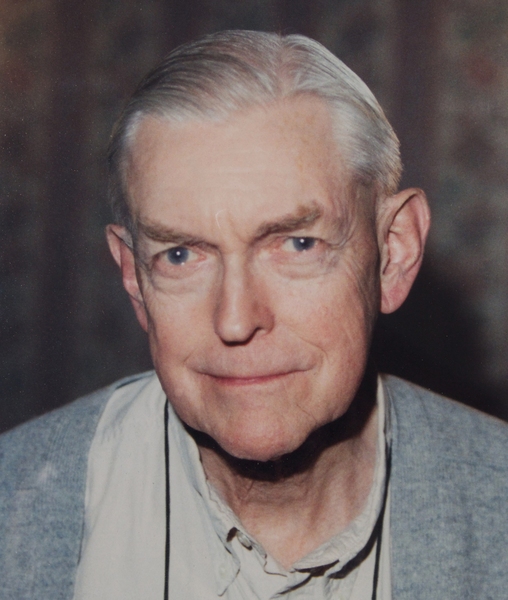Louis Norberg Howard, emeritus professor of mathematics at MIT, and McKenzie emeritus professor at Florida State University, died on Sunday, June 28, at the age of 86.
Howard joined the MIT mathematics faculty in 1955 as an assistant professor, and was promoted to full professor in 1964. He retired from MIT in 1984.
Howard was an applied mathematician who worked primarily in the field of fluid dynamics. He made fundamental contributions to a broad range of subjects, including hydrodynamic stability and geophysical flows. He made a number of key advances in our understanding of turbulent convection, flows in Hele-Shaw cells, salt-finger zones, rotating flows, and reaction-diffusion equations. The power of his mathematical modeling was evident when he transformed qualitative ideas about the bounds on turbulent transport into rigorous mathematical arguments that initiated the field of upper-bound theory.
While his background was in physics and applied mathematics, he had an exceptional command of pure mathematics, as evidenced by his existence proofs concerning the hydrodynamic equations, and his elegant Semicircle Theorem. His mathematical powers were highlighted when he generalized and simplified extensive previous work on the Richardson number criterion for shear flows. He also had a practical side, and was no stranger to either the laboratory or oceanographic field work. His rare combination of physical intuition and analytic power gave his work its characteristic physical relevance, breadth, and depth.
Howard was a scholar and a gentleman, beloved, admired and respected by all who knew him. He was a generous collaborator and mentor who shared his deep knowledge of fluid dynamics and applied mathematics with modesty and grace. He published widely with colleagues, postdocs, and students. He supervised nine PhDs at MIT, one at Princeton University, two at Florida State University, and he co-mentored several graduate students from other institutions. He continued his research long after retirement; his final paper is soon to appear in the Journal of Fluid Mechanics.
Howard was an inspiring teacher who taught a wide range of undergraduate and graduate subjects at MIT. He was fundamental to the successful expansion of MIT’s graduate program in applied mathematics. His time at MIT coincided with the expansion of the physical applied math group, of which he was a central figure. After MIT, Howard joined the faculty at Florida State University (FSU) in 1981 as professor of mathematics and affiliate professor of mechanical engineering. His departure for FSU was a great loss to the MIT scientific community. In 1986, he was appointed to the FSU Foundation Professorship, and he retired from FSU in 1996. His recent passing has been a blow to the international fluid mechanics community, which recognized him as one of its leading lights.
Howard had developed a long-term association with the Woods Hole Oceanographic Institution and was one of the original members of the Geophysical Fluid Dynamics (GFD) Summer Program in 1959, on whose steering committee he served from the early 1960s until 1984. Howard was the principal lecturer at GFD on several occasions, giving a series of advanced courses that helped establish the foundations of geophysical fluid dynamics. He supervised many GFD Fellows, and remained an active member of the WHOI GFD Summer School long after his retirement. Howard also built and maintained a cottage on Crooked Pond in Falmouth, Massachusetts, where he was a generous host to many.
Howard served as the representative of the American Mathematical Society on the U.S. National Committee on Theoretical and Applied Mechanics from 1979 to 1982, and on its Science Policy Committee from 1983 to 1987. In 1983 he was a member of the Council of the Fluid Dynamics Division of the American Physical Society. He served on the advisory board of Dynamical Systems Group of the Society of Industrial and Applied Mathematics from 1989 to 1991.
Howard was born in Chicago, Illinois, on March 12, 1929. He received his BA in physics from Swarthmore College in 1950, and his MA and PhD in mathematical physics from Princeton, in 1952 and 1953, respectively, under the supervision of Donald Spencer. He took an appointment as a Higgins lecturer in mathematics at Princeton in 1953, after which he became a research associate in mathematics and aeronautics at Caltech in 1955.
Howard was named a fellow of the American Academy of Arts and Sciences in 1965 and the American Physical Society in 1984, and was elected to the National Academy of Sciences in 1977. In 1997, he was honored with the prestigious Fluid Dynamics Prize of the American Physical Society.
Howard was married for almost 50 years to Alice G. S. Howard, with whom he had five children. They were divorced in 2000. Howard is survived by his ex-wife and four of his children, Astrid H. Howard, Emily A. Howard, Maxwell Carr-Howard and Holly H. Bjorklund.






